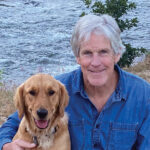Teaching a Boy to Meditate Underwater
John Cahil Rom/Pexels
Relax, and bring your attention to your breath. If you are like many, this is a natural call to meditation and peace. But for others — especially young men — the call to meditation is anything but relaxing. Boys often get bored, fidgety, and even anxious. Years ago Dan Goleman, PhD, who became famous for Emotional Intelligence, created a simple self-test to find those who would relax during meditation and those who would not. His point was both simple and liberating. People are different. We have different paths to peace — and those paths may change with time.
I thought of Goleman’s test when I took my twelve-year-old son, Tim, for a week at a resort called Anthony’s Key on the island of Roatan in Honduras (anthonyskey.com). Tim’s not a natural meditator, but he took a huge leap in that direction through learning to scuba dive. Let me explain:
My goal, other than a week together, was for Tim to see some of the Caribbean’s most spectacular coral reefs. Even more than rain forests, coral reefs are primary engines of evolution, and the reefs in front of Anthony’s Key are the second longest in the world. Tim and I arrived with our masks and snorkels and were happily outfitted with green wristbands that allowed us to hop onto the snorkel boats that went out to the reefs each morning and afternoon. What we discovered, however, was that we were the only guests aboard the 40-foot snorkel boat. That meant we had a personal guide for snorkeling, but we couldn’t dodge the reality that we were pretty much the only people at the entire resort with green wristbands. Everyone else — even the ten-yearolds — had blue bands, which meant they got to go out on the dozen boats outfitted for scuba divers.
What does it take to get a blue wristband? I asked the boat captain, after our first snorkel on Friday morning. He explained that a PADI diving certification required watching six 45-minute DVDs, reading a book, answering the questions at the end of each chapter, a couple hours of learning skills in waist-deep water on the beach, and two “check out” dives in the open ocean. The captain said we could have blue wristbands by Monday morning.
So after lunch, Tim and I signed up. That afternoon we watched three of the six DVDs and read half the book — basically all about breathing and awareness. Saturday morning we finished the book and the videos. It felt like cramming for a test in college, but now my study-mate was my own son — and he was figuring out the dive tables faster than I could.
Saturday afternoon we were outfitted with scuba gear and took a small boat to a beach across the lagoon to learn how to use it. The resort has a dolphin program, and we watched as a newborn dolphin took its very first breaths on the surface as we began to learn to breathe underwater. At one point Tim and I sat crossedlegged, facing each other in about four feet of water, attempting to remain about a foot off the sandy bottom by controlling our breathing. With each inhale we would become more buoyant and rise slightly off the bottom. Then we would exhale and sink back. It was like a basic meditation course — learning breathing, relaxation, and attention — but being submerged made it infinitely more interesting. My son was now my dive buddy, the person responsible for making sure I was safe.
On Sunday morning we were aboard a scuba boat heading out for the reefs to practice our new breathing skills in the open ocean. Now we were checking each other’s gear and practicing our hand signals in earnest because we would literally be looking out for each other. A few minutes later we were down among the pillars of coral, gently rising and falling with each breath, completely immersed in the richest ecosystem in the world.
The next morning we received our blue wristbands, and we spent the next few days doing another five dives. We went deeper, dove at night, squeezed through narrow canyons, and learned to see all kinds of new and astonishing living creatures. Yet the basic practice was much the same: slow breathing, relaxation, stillness, 360-degree awareness, and consistently looking out for each other. It was a perfect time for a rite of passage and a perfect way to do it. Afterward, I asked Tim if he wanted to learn to meditate, but for now he’d rather go back to scuba.


